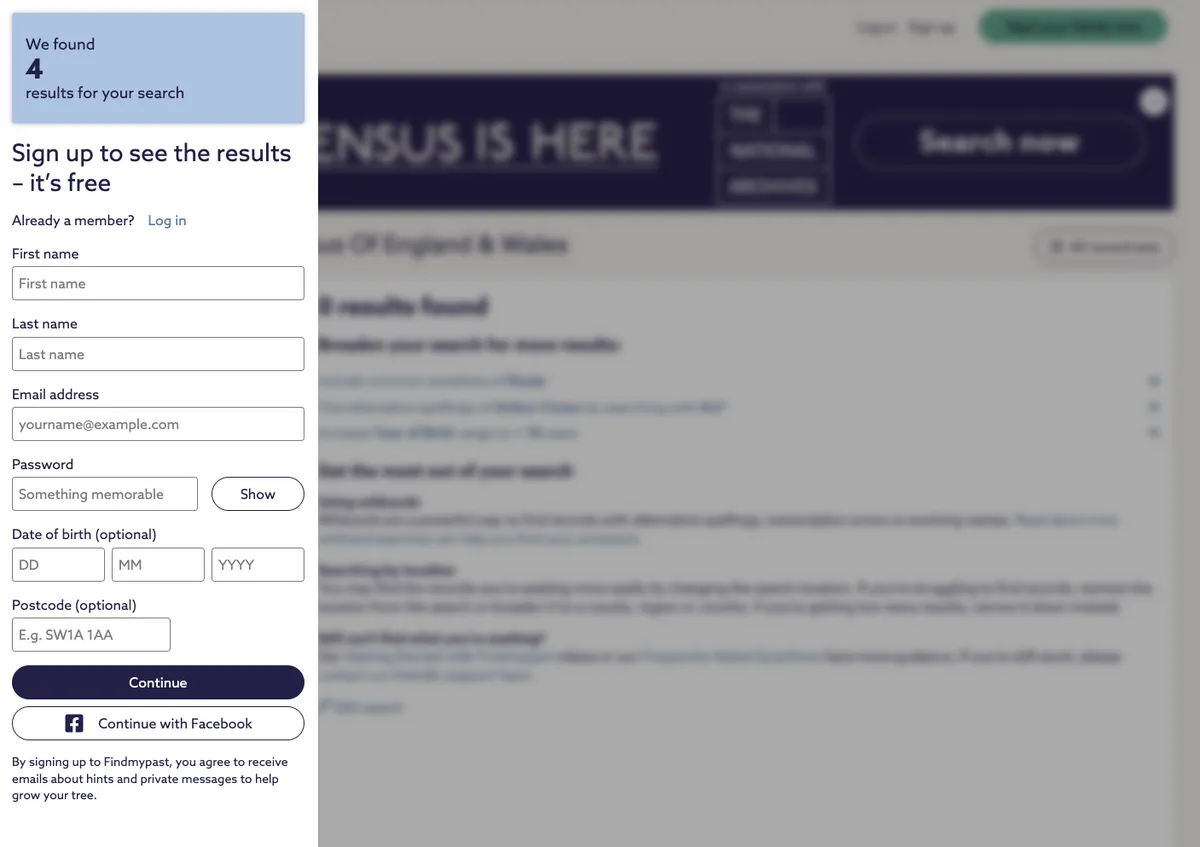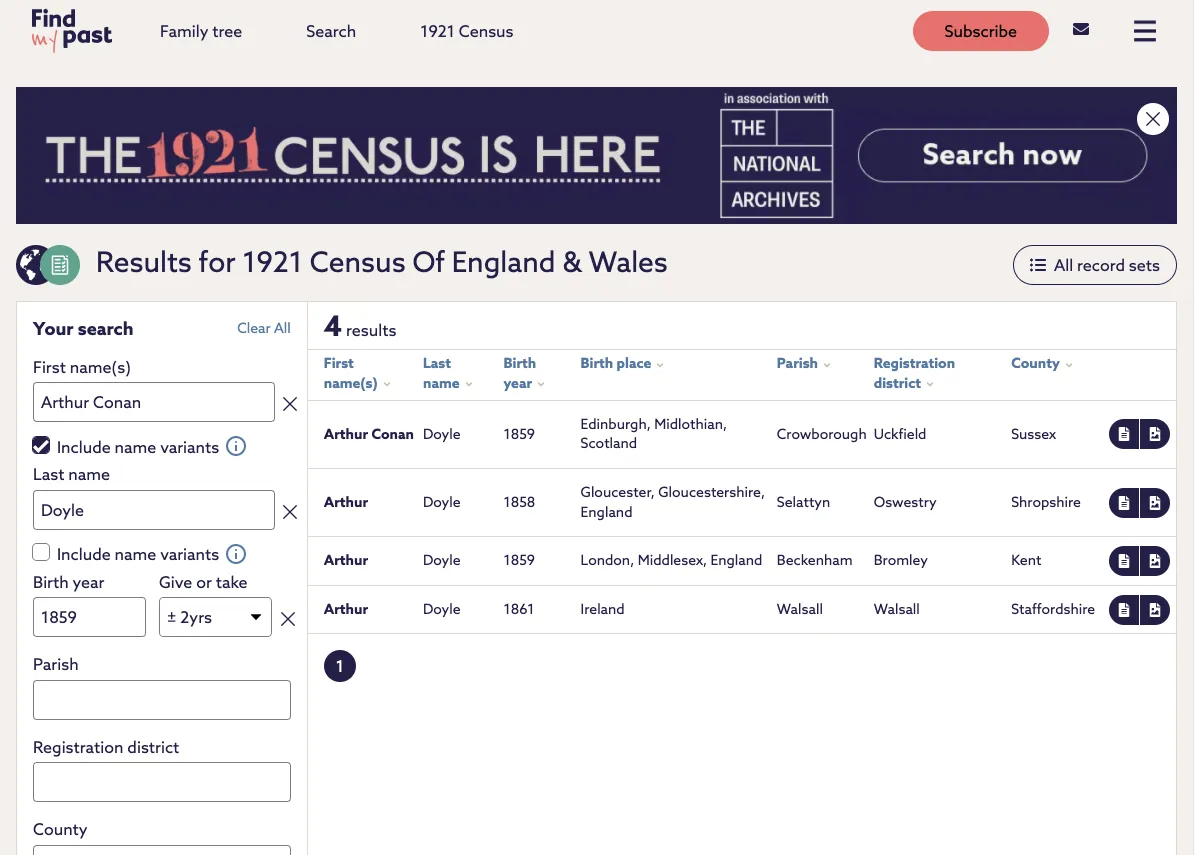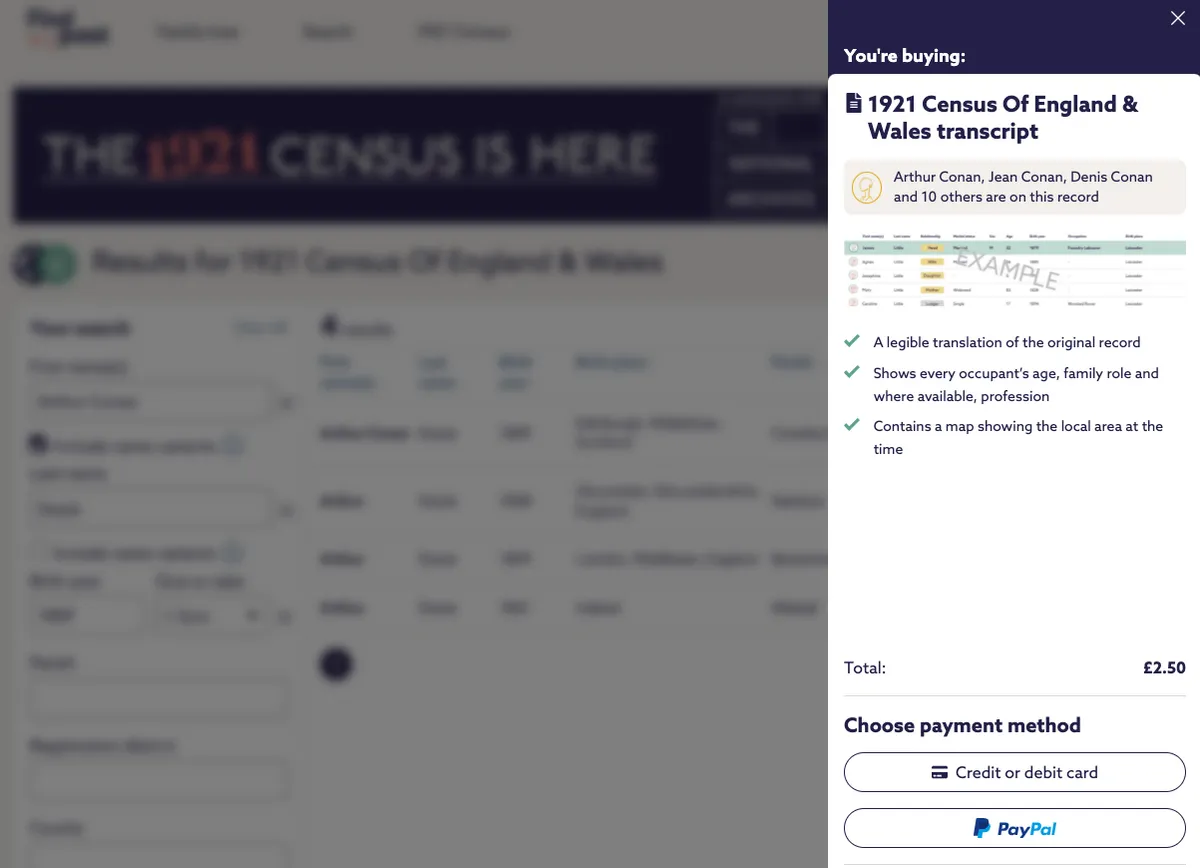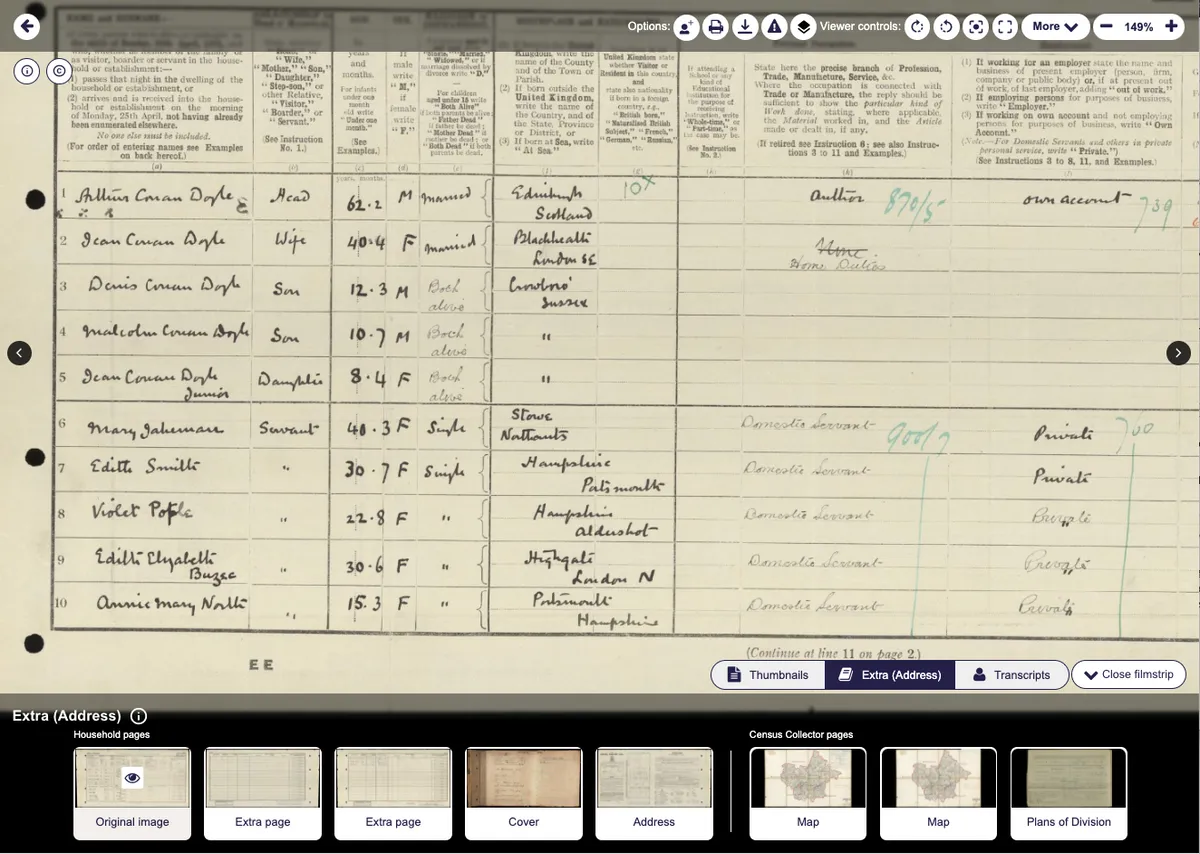The 1921 census for England and Wales can only be viewed via Findmypast. They are included in Findmypast's Premium subscription package and are available to other Findmypast subscribers at a cost of £2.50 per image or £3.50 per transcription. It is possible to book a slot to view the 1921 census for free at three hubs: The National Archives in Kew; Manchester Central Library and the National Library of Wales in Aberystwyth.
Access the 1921 census for England and Wales here
The 1921 census for Scotland is available on ScotlandsPeople.
To view 1921 census records online for England and Wales, follow these simple steps:
1. Go to Findmypast.co.uk

Go to findmypast.co.uk and on the home page click on 'The 1921 Census is Here'.
2. Enter in the details of the person or house you are looking for

Here we are looking for the Sherlock Holmes creator Arthur Conan Doyle (see a photo of him with his family above). Click on 'Advanced search' if there are too many results or if you want more search options e.g. place of birth or occupation. You can also choose to search by address which is useful if you want to discover who was living in your house in 1921.
3. Sign up for a free account to see the initial search results

If you don't already have an account with Findmypast, you will need to register at this stage. You can also opt to 'Continue with Facebook' if you have a Facebook account.
4. View free search results for 1921 census

Once you have signed in, you can see the search results. This is all still free at this stage and you can add additional filters to your search using the left-hand panel if you want to reduce results further. The small blue oblong box next to each entry gives you two options, a full record transcription on the left which will cost £2.50 or an image of the original record which will cost £3.50. If you hover your cursor over either of these options you will be given the first names of up to three other people in that household and a number stating how many other people are there. This should help you decide whether this is the household you are looking for before you decide to part with any cash.
If there are too many results and you are not sure you are purchasing the right transcription, select 'Advanced options' at the bottom and you can add details such as county of birth or occupation. So, if you know that the person you are looking for was born in Suffolk or was a butcher or a teacher, add that into the county of birth or occupation field and it will refine the results to only include results that match. You won't be able to see the occupation in the free search results but the entries you see will reflect them.
5. Pay to access 1921 census record transcription

When you click on the option to buy a transcription, a payment screen pops up on the side and you can pay by credit or debit card or choose PayPal if you have a PayPal account. This costs £2.50 but you will only see the transcript for this. You will not see the original image. Most family historians will probably prefer to opt for the original image which contains all the information (and more) than you will find on the transcription. The quality of the scans means that for most people the transcription will not be necessary.
6. Read a full transcription of the 1921 census record

If you buy a 1921 census record transcription, you will get a full list of everyone who was in the household as well as a complete transcription of the person's record. A nice additional touch is that you get a historical map to show where the house was based, although we have had reports that this is not always correct.
If you wish to report an error in a transcription of the 1921 census then you need to click on 'More actions' at the top of the transcription and select 'Report an error'. Many users have reported errors, especially in the surname transcriptions, so this function is an important way of ensuring that the census is improved for future users. However, family historians who choose to only download the original record will not have an opportunity to submit corrections. This can only be done if you buy the transcription.
In the example above for Arthur Conan Doyle, you can click on 'Show 8 more rows' to see other people who were in his house on census night including servants and visitors. One of the visitors was spiritualist and medium Ada Bassinet visiting from America as well as James Hewitt and Barbara McKenzie who founded the British College of Psychic Science. Perhaps Doyle, a keen believer in spiritualism, was hosting a seance on census night.
7. Download a copy of the original 1921 census record

If you want to see the original 1921 census record, then you need to pay an additional £3.50. Alternatively, you can go straight to the original image and not download the transcription. Click on the 'Extra (Address)' box below the image to see any extra pages included in this record. Large households will be recorded on more than one sheet but this is included in the £3.50 fee. Clicking on 'Extra (Address)' also reveals the front page of the schedule which includes the address. Although you can return to the 1921 census on Findmypast at any time to see schedules that you have paid for, you should also download the documents just to ensure future access. Makes sure you include all images in 'Extra materials' and store them in a folder together so that the address stays with the schedule.
8. Tips on finding 'missing' records on the 1921 census
If you can find a household on the 1911 census but you can't find them in 1921, look at the 1911 schedule to see if there are potential ways of misreading the handwriting. The chances are that whoever filled in 1911 also completed the 1921 schedule so you may be able to search on a misreading of the surname.
You can add place of birth in the advanced filters and this is much more likely to be correct than in earlier 19th century censuses.
If you think a surname has been mistranscribed (and many have), you can try first names, which are much less likely to be mistranscribed, plus a precise place of birth. This works best with people who have recorded two first names.
You can also use wildcards if you think a surname has been mistranscribed. If you are looking for Stanley Hibbert, for example, and you can't find him, add other details and try H*bert or even just H* as the surname. This will give lots of results, but, hopefully the ones at the top will also match the other criteria you have added and the right candidate may pop out at you.
The advanced search lets you include just one extra member of the household. However you can repeat the search to check if other people you expect are there and see if the same free result keeps turning up. It's slow, but can be a good way to check if you have the right household before buying. Remember that other names in the household may be mistranscribed so try other options if you think this might be the case.
If you have a paid subscription to Findmypast, they have electoral registers for 1921 covering England and Wales as well as Angus and West Lothian in Scotland. These can be easier and more accurate to search and will provide an address which you can then use to search on the 1921 census.
